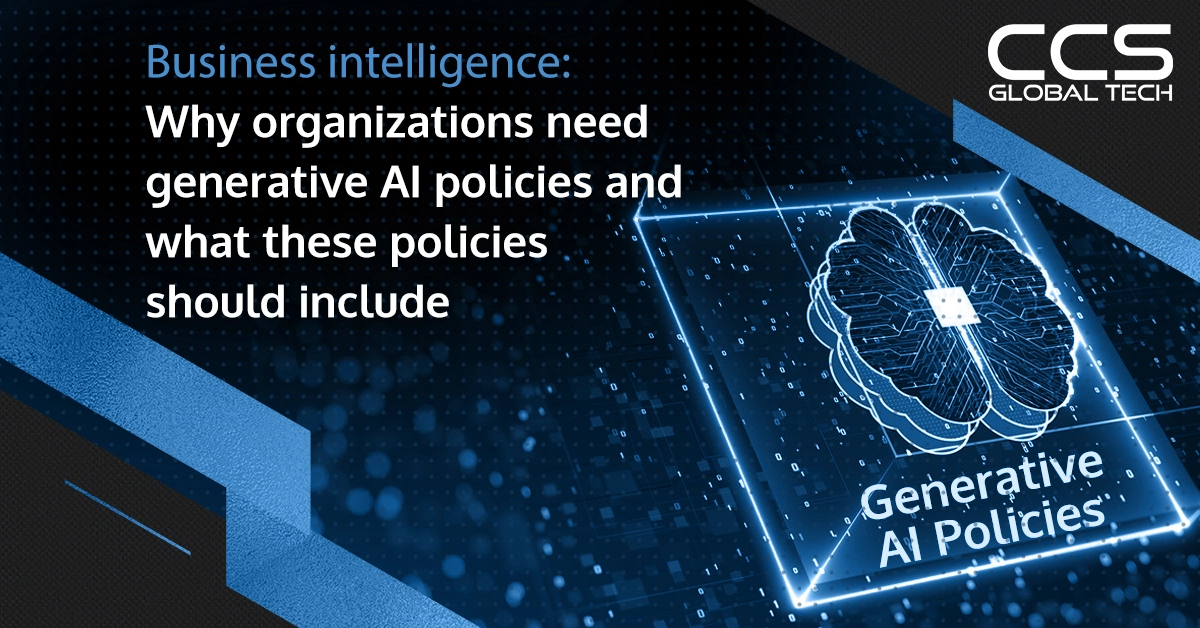Why organizations need generative AI policies and what these policies should include

As tech professionals, we’re getting a lot of questions around generative AI, the one everybody’s heard of being ChatGPT. Many of the questions revolve around use cases: What’s the best way to leverage generative AI for business success?
As we’re all discovering, this new technology offers myriad business-boosting uses. However, as this new technology enters the business ecosystem, we recommend looking up from its magical ability to create text or images and giving serious attention to how these new assets impact your organization’s content, i.e., its voice.
The U.S. Copyright Office is already grappling with how AI-generated content, including textual, visual, and audio, fits into the ownership discussion. For now, they’re making their determination on a case-by-case basis, although the trend is that a human element must be present to receive a copyright.
Why is this important to your business or organization?
First, it demonstrates the controversy around computer-made content: Does it really count? If so, how much? Is it worthy of protecting? Will it get your organization in hot water?
First, it demonstrates the controversy around computer-made content: Does it really count? If so, how much? Is it worthy of protecting? Will it get your organization in hot water?
Second, the U.S. Copyright Office’s involvement is a high-level model for what smart businesses need to be doing, namely creating a company policy for generative AI.
Before you brush this idea aside as an overzealous precaution, consider this:
Chances the number in your head is low. This type of content is as pervasive as kudzu
Here’s a quick primer on why a company policy for ChatGPT and all other generative AI tools is important to add to your tech schema and what to include as you begin to implement yours.
Here’s a quick primer on why a company policy for ChatGPT and all other generative AI tools is important to add to your tech schema and what to include as you begin to implement yours.
ChatGPT Company Policy: What is it?
This seems obvious, but let’s lay it out in black and white to be clear.
So, there’s your goal.
What to include
- Purpose: Clearly state generative AI’s intended use in your organization, such as improving productivity, enhancing customer support, or automating repetitive tasks.
- Scope: Define who is allowed to use generative AI tools and which departments or job roles can access the technology. Establish parameters for that use.
- Data privacy and security: Outline the measures taken to protect sensitive information and maintain compliance with relevant data protection laws while using generative AI.
- Ethical considerations: Establish guidelines for responsible AI usage, including avoiding biases, checking for plagiarism, and ensuring the technology’s output aligns with the company’s values and ethical standards.
- Monitoring and evaluation: Outline the process and procedures the organization uses to monitor and evaluate generative AI products as well as how users are following policy mandates.
- Liability and accountability: Determine who is responsible for the consequences of AI’s actions, such as errors or misinformation, and outline the procedures for rectifying any issues.
Key takeaway
Will an official company policy account for every situation and contingency associated with generative AI technology? Of course not. Technology is developing too quickly for anyone to anticipate all the ways it will be used. However, creating a policy now establishes guidance for your employees and sets parameters for how these tools enter your organization’s technology landscape. A policy helps keep AI-generated content in check so it aligns it with your brand, ensuring your content remains authentic and in line with your business goals.
